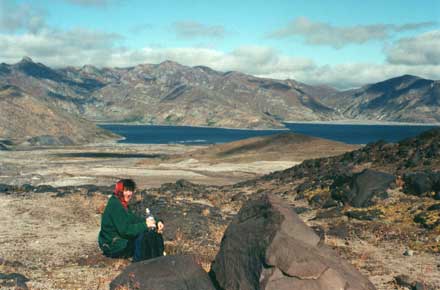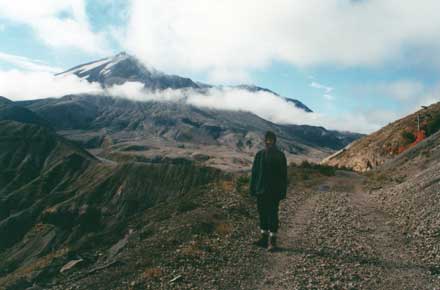Mt St Helens
Key information: Mt St Helens 
- A huge volcanic explosion in 1980 tore out half of this (now) 2,550m mountain, leaving total devastation and the mountain some 1,300ft lower. You will approach through thousands of pine trunks, lying like matchsticks in the line of the blast.
- Drop down into the vast bowl beneath the mountain and see the effects of the blast: harsh, water-eroded rock and mud beneath the crags of the high horseshoe around the crater. Plant life is on its way back here, an interesting experiment in regeneration in a sterile site.
- If you walk further up the ridge above this chasm, you get a superb panorama of the Cascade Mountains as well as a view across the scene of the catastrophe. It is also possible to ascend the Monitor ridge to the high horseshoe above the crater in a very tough days climbing, but this is only for very experienced walkers.
- This walk is in high mountains. Come prepared.
Walkopedia rating
- Walkopedia rating86
- Beauty30
- Natural interest19
- Human interest4
- Charisma33
- Negative points0
- Total rating86
Vital Statistics
- Length: Variable
- Maximum Altitude: Around 2,500m (if you climb to the high ridge)
- Level of Difficulty: Variable
This walk description page is at an early stage of development, and will be expanded over time. Your comments on this walk, your experiences and tips, and your photos are very welcome.
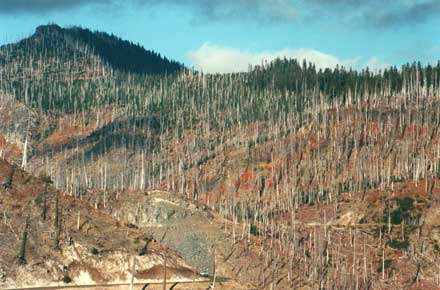
WALK SUMMARY
Mt. St Helens May 1980 eruption was, to put it mildly, catastrophic, leaving 57 people dead, devastation for miles around and the mountain some 1,300ft lower, transformed from a classic cone volcano to a vast horseshoe of cliffs around a central crater in which a vigorous new cone is now sprouting.
The mountain exploded after an earthquake and its entire north face collapsed, leaving massive desolate spill of rock and mud.
The easy walk is a trudge on a track around the back of nearby hillsides, with good views out over the surrounding hills (which are still covered in the bleached bones of the forests that were flattened in the blast- all lying in the same direction, a weird spectacle), then down the into spectacular if desolate bowl beneath the volcano proper. Once there, you can choose from a range of paths in this tough wilderness, but allow time to get back up the same trail you came in by.
You can continue up the ridge from the drop-off into this bowl, to gain big views of the Cascades and across the huge bowl created by the explosion.
You can also climb the demanding Monitor Ridge to high above the central crater. A long, tough climb (with no set route) on difficult surfaces, including snow. Dangerous high ridge, its top slippery above huge cliffs. Unpredictable weather. Permits are required and can be difficult to get (very hard for popular times). Start from Climbers Bivouae on the Ptarmagon Trail. See the excellent www.besthike,com for detailed information on the Monitor Ridge climb and Mt. St Helens more generally.
Best book is the Falcon Mount St Helens guide by Fred Barstad.
To be expanded: suggestions please!
Other accounts: share your experiences
Your comments on this walk, your experiences and suggestions, and your photos are very welcome. Where appropriate, you will be credited for your contribution.
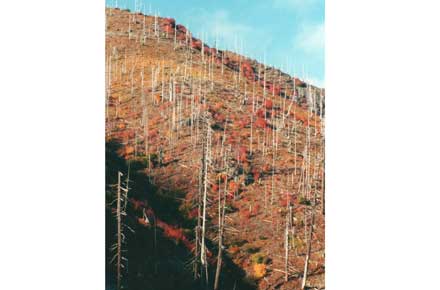
Safety and problems: All walks have inherent risks and potential problems, and many of the walks featured on this website involve significant risks, dangers and problems. Problems of any sort can arise on any walk. This website does not purport to identify any (or all) actual or potential risks, dangers and problems that may relate to any particular walk.
Any person who is considering undertaking this walk should do careful research and make their own assessment of the risks, dangers and possible problems involved. They should also go to “Important information” for further important information.
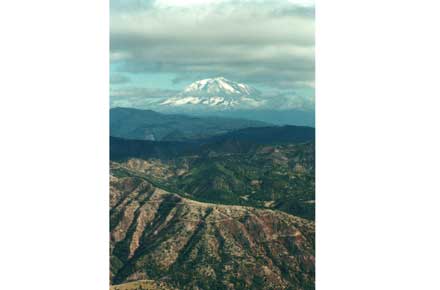
Anyone planning an expedition to this place should see further important information about this walk.
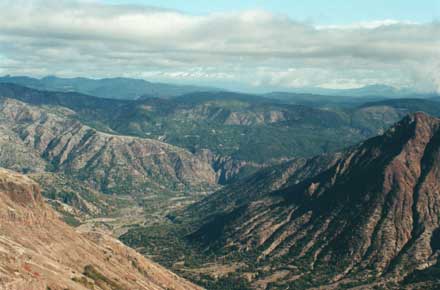
Responsible travel matters, a lot. How you travel will make a real difference - for better or worse. PLEASE consider this when making plans. Read more




